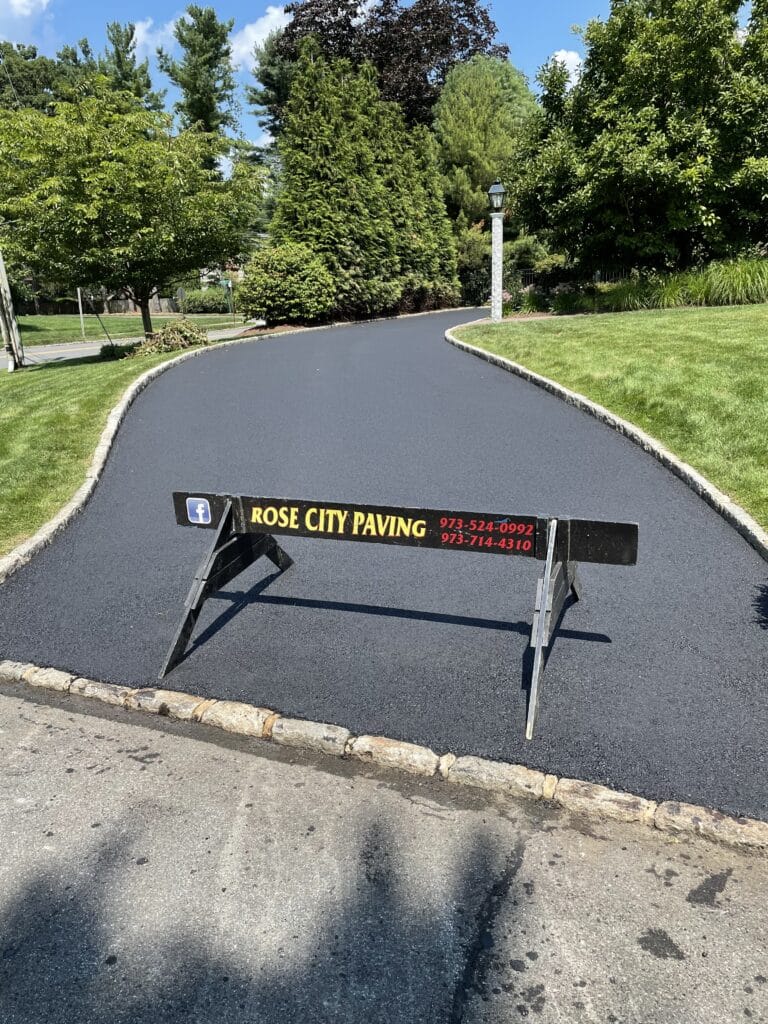Hot Mix Asphalt: A Sustainable Service for Pavement
Warm Mix Asphalt (HMA) has arised as a leading sustainable selection for pavement remedies, using a myriad of environmental advantages and innovative technologies. As the need for green construction techniques grows, discovering the nuances of HMA's sustainability can give important understandings into the future of sidewalk services.
Environmental Advantages of Hot Mix Asphalt

Moreover, Hot Mix Asphalt assists to mitigate metropolitan heat island results. Its dark color absorbs sunshine, minimizing the amount of warm reflected back right into the atmosphere contrasted to lighter-colored sidewalks. This can reduce ambient temperature levels in metropolitan locations, decreasing the demand for cooling and eventually minimizing energy usage.
In enhancement, Hot Mix Asphalt contributes to enhanced stormwater monitoring. Its permeable nature permits water to reenergize and penetrate the pavement groundwater products, reducing overflow and the threat of flooding. These environmental advantages make Warm Mix Asphalt a sustainable choice for paving highways and roads.
Energy Effectiveness in HMA Manufacturing
Is power performance a crucial element in the production of Hot Mix Asphalt (HMA)? Absolutely. Power plays a significant role in the production of HMA, impacting both cost and ecological sustainability. One key aspect of energy performance in HMA manufacturing is using warm mix asphalt (WMA) technologies (hot mix asphalt). WMA permits the mixing and placement of asphalt at reduced temperature levels contrasted to standard hot mix asphalt, resulting in reduced power intake during production. This procedure not just reduces fuel use however likewise lowers greenhouse gas emissions, making it an extra ecologically friendly alternative.
Furthermore, developments in plant modern technologies have led to even more energy-efficient HMA production procedures. Modern plants are designed with attributes like recycled asphalt pavement (RAP) handling capabilities, reliable burner systems, and boosted insulation, all contributing to power savings. By maximizing energy usage in HMA manufacturing, the market can lower its carbon footprint while keeping premium sidewalk materials. Power efficiency is, consequently, an important factor to consider in guaranteeing the sustainability of Warm Mix Asphalt production.
Recyclability of Warm Mix Asphalt
The recyclability of Hot Mix Asphalt (HMA) is an essential aspect of its sustainability and long-lasting ecological influence. HMA is one of the most recycled products in the USA, with over 100 million lots of redeemed asphalt pavement (RAP) being reused every year in brand-new sidewalk construction. Recycling HMA provides a number of ecological advantages, such as reducing the requirement for virgin materials, reducing power usage throughout manufacturing, and lowering the quantity of waste sent out to land fills.
The process of recycling HMA entails grating the existing pavement, squashing it right into smaller pieces, and mixing it with brand-new accumulation and asphalt binder to create a recycled mix. Overall, the recyclability of HMA plays a substantial function in advertising sustainable techniques within the sidewalk market.

Long-Term Efficiency of HMA
Asphalt go to my site pavements demonstrate sturdiness and strength over an extensive duration, mirroring the lasting efficiency of Warm Mix Asphalt (HMA) The long life this page of HMA can be connected to its capacity to hold up against rush hour lots, rough climate condition, and the results of aging. Research studies have shown that well-designed and properly constructed HMA sidewalks can last for two decades or even more with routine maintenance. The key to making the most of the long-term performance of HMA hinges on making use of top notch products, following best techniques in building and construction, and carrying out efficient maintenance approaches. Correct drain, routine examinations, and prompt repair work are important for preserving the architectural integrity of HMA sidewalks gradually. Furthermore, advancements in HMA modern technology, such as making use of polymer-modified binders and warm mix asphalt, have company website actually even more boosted the toughness and durability of HMA sidewalks. By prioritizing quality building and construction and maintenance techniques, HMA remains to confirm itself as a economical and sustainable option for long-lasting sidewalk infrastructure.

HMA: Resilience and Sustainability
Demonstrating both longevity and sustainability, Hot Mix Asphalt (HMA) has actually ended up being a cornerstone in the building and construction of lasting sidewalk infrastructures - commercial parking lot paving. HMA's sturdiness stems from its capability to withstand hefty loads, extreme climate condition, and high website traffic volumes, making it a trusted choice for highways, highways, and flight terminal paths. The composition of HMA, which normally includes accumulations, binder, and filler, plays an essential duty in enhancing its durability and resistance to deterioration
Additionally, HMA's sustainability depends on its recyclability and energy-efficient production process. The capacity to recycle reclaimed asphalt pavement (RAP) in brand-new HMA combinations reduces the demand for virgin products and decreases the environmental effect of sidewalk building and upkeep. Additionally, the energy effectiveness of creating HMA exists in its reduced blending temperatures compared to other pavement materials, causing lowered power intake and greenhouse gas emissions.
Conclusion
Finally, warm mix asphalt (HMA) offers a sustainable solution for pavement with its eco-friendly qualities. HMA's recyclability, power effectiveness in production, and lasting toughness make it a green selection for road building. By saving all-natural sources, minimizing waste, and decreasing greenhouse gas exhausts, HMA plays a critical duty in advertising sustainability in facilities advancement. Its capability to reduce urban heat island results additionally highlights its significance in creating ecologically conscious and resilient sidewalk systems.
HMA is one of the most recycled products in the United States, with over 100 million heaps of recovered asphalt sidewalk (RAP) being recycled annually in brand-new pavement building and construction.The process of reusing HMA includes crushing the existing pavement, squashing it into smaller sized pieces, and blending it with new accumulation and asphalt binder to produce a recycled mix.Asphalt sidewalks demonstrate longevity and durability over an extensive period, mirroring the long-term efficiency of Hot Mix Asphalt (HMA) In addition, advancements in HMA modern technology, such as the use of polymer-modified binders and warm mix asphalt, have actually even more boosted the resilience and long life of HMA pavements. The capability to recycle reclaimed asphalt pavement (RAP) in brand-new HMA mixtures minimizes the need for virgin materials and lessens the ecological impact of sidewalk building and construction and maintenance.